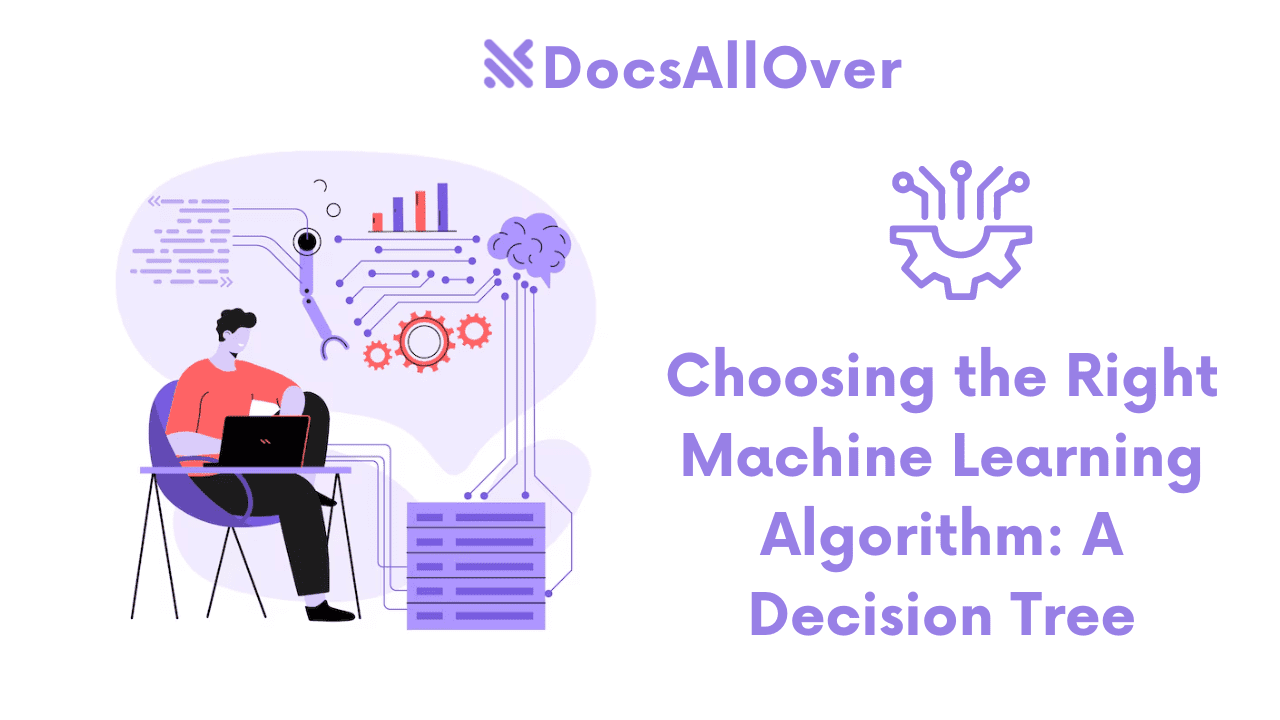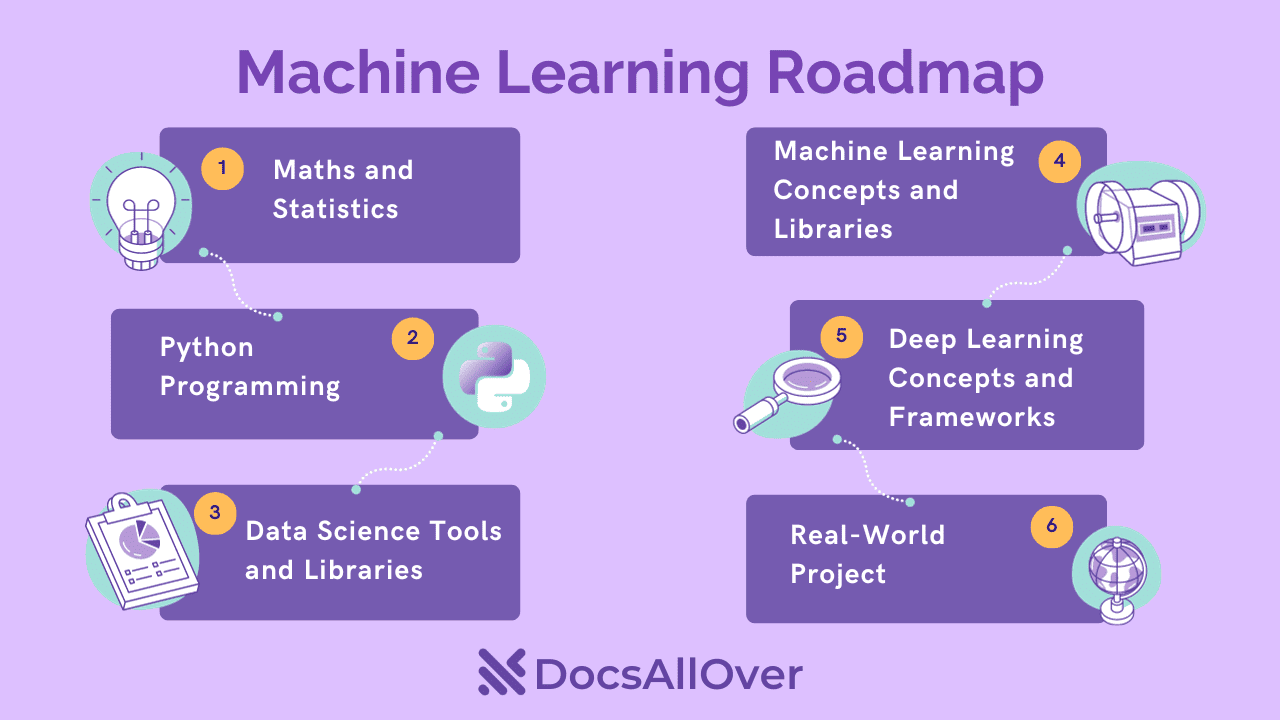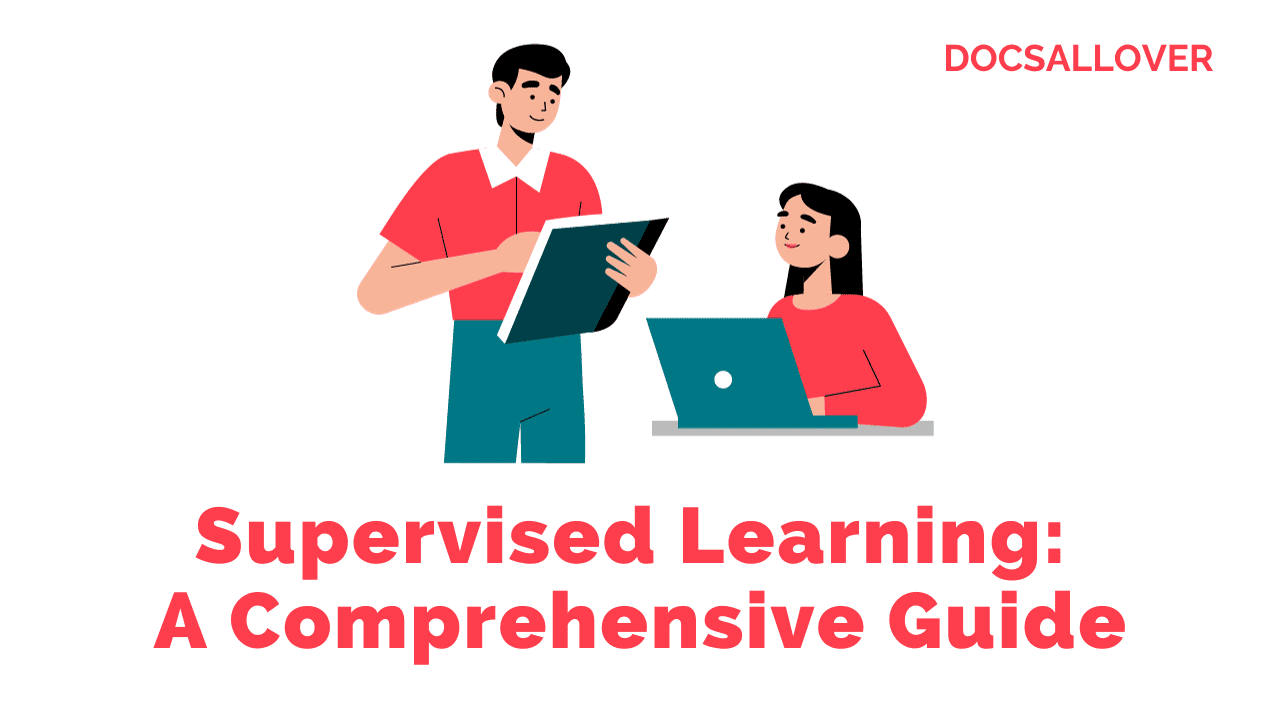Essential Math for ML: Linear Algebra, Calculus, and Statistics

Machine learning, at its core, is a mathematical discipline. A strong foundation in mathematics is crucial for understanding how machine learning algorithms work, developing new models, and effectively applying them to real-world problems.
The Role of Mathematics in Machine Learning
Mathematics provides the theoretical underpinning for machine learning algorithms. It enables us to:
- Represent data: Structures like vectors and matrices are used to represent data efficiently.
- Measure relationships: Statistical methods help quantify relationships between variables.
- Optimize models: Calculus is essential for finding optimal parameters in machine learning models.
- Make predictions: Linear algebra and probability theory are used to make predictions based on data.
Overview of Key Mathematical Areas for ML
To excel in machine learning, a solid grasp of the following mathematical areas is essential:
- Linear Algebra: Deals with vectors, matrices, and linear transformations.
- Calculus: Involves rates of change, optimization, and derivatives.
- Statistics: Focuses on data collection, analysis, interpretation, and prediction.
By understanding these areas, you'll be well-equipped to tackle various machine learning challenges.
Linear Algebra: The Foundation of Machine Learning
Linear algebra is the bedrock of many machine learning algorithms. It provides the mathematical framework for representing and manipulating data.
Fundamental Concepts
Scalars
- Definition: A scalar is a single numerical value, representing a magnitude without direction.
- Examples: Temperature, mass, speed, time, energy.
- Notation: Typically represented by lowercase letters (e.g., a, b, c).
Vectors
- Definition: A vector is an ordered list of numbers representing magnitude and direction. It can be visualized as an arrow in space.
- Examples: Displacement, velocity, force, acceleration.
- Notation: Typically represented by bold lowercase letters (e.g., v, u), or with an arrow above the letter.
- Example: A 2D vector might be represented as v = [3, 4], where 3 is the x-component and 4 is the y-component.
Matrices
- Definition: A matrix is a rectangular array of numbers arranged in rows and columns.
- Examples: Images, transformation matrices, data tables.
- Notation: Typically represented by capital letters (e.g., A, B).
- Example: A 2x3 matrix might look like:
A = [[1, 2, 3],
[4, 5, 6]]
- Example: A 2x3 matrix might look like:
Tensors
- Definition: A generalization of scalars, vectors, and matrices to higher dimensions.
- Examples: Multidimensional arrays, images with color channels, video data.
- Notation: Often denoted by bold capital letters with specific indices (e.g., T).
- Example: A 3-dimensional tensor might represent a color image with dimensions (height, width, color channels).
Understanding these fundamental building blocks is essential for grasping more complex concepts in linear algebra and their application in machine learning.
Vector Operations
Addition and Subtraction
- Definition: Vector addition and subtraction involve combining corresponding elements of two vectors.
- Process: To add or subtract two vectors, simply add or subtract their corresponding components.
- Visualization: Geometrically, vector addition can be visualized as placing the tail of one vector at the head of the other, and the resultant vector is from the tail of the first to the head of the second. Subtraction is the reverse.
Example:
Scalar Multiplication
- Definition: Multiplying a vector by a scalar involves multiplying each component of the vector by the scalar.
- Process: To multiply a vector by a scalar, multiply each component of the vector by the scalar value.
- Effect: Scaling the vector without changing its direction (if the scalar is positive), or reversing its direction (if the scalar is negative).
Example:
Dot Product
- Definition: The dot product (or scalar product) of two vectors is a scalar value that measures the similarity or projection of one vector onto another.
- Calculation: The dot product is calculated by multiplying corresponding components of the two vectors and summing the results.
- Geometric Interpretation: The dot product is related to the angle between the vectors. If the angle is acute, the dot product is positive; if obtuse, it's negative; if the vectors are perpendicular, the dot product is zero.
Example:
Cross Product
- Definition: The cross product is a binary operation on two vectors in three-dimensional space that results in a third vector perpendicular to both original vectors.
- Calculation: The magnitude of the cross product is equal to the area of the parallelogram formed by the two vectors. The direction of the cross product is determined by the right-hand rule.
- Application: Primarily used in physics and computer graphics.
Note: While the dot product is a scalar, the cross product is a vector.
Matrix Operations: A Deeper Dive
Addition and Subtraction
- Compatibility: Matrices must have the same dimensions (same number of rows and columns) to be added or subtracted.
- Element-wise operation: Corresponding elements in the matrices are added or subtracted.
Example:
Scalar Multiplication
- Simple operation: Each element of the matrix is multiplied by the scalar.
- Resulting matrix: The dimensions remain the same as the original matrix.
Example:
Matrix Multiplication
- Compatibility: The number of columns in the first matrix must equal the number of rows in the second matrix.
- Dot product of rows and columns: Each element of the resulting matrix is the dot product of a row from the first matrix and a column from the second matrix.
- Dimensions: If A is an m x n matrix and B is an n x p matrix, the product AB will be an m x p matrix.
Example:
Matrix Inverse
- Definition: The inverse of a matrix A, denoted A?¹, is another matrix such that A * A?¹ = I, where I is the identity matrix.
- Existence: Only square matrices have inverses, and not all square matrices are invertible.
- Calculation: Calculating the inverse can be computationally expensive for large matrices.
Example:
Determinant
- Definition: A scalar value associated with a square matrix that provides information about the matrix's properties.
- Calculation: Several methods exist, such as cofactor expansion or row reduction.
- Significance: A determinant of zero indicates a singular matrix (no inverse exists).
Example:
Transpose
- Definition: The transpose of a matrix is obtained by interchanging its rows and columns.
- Notation: A transposed matrix is often denoted as A^T.
Example:
These operations form the foundation for understanding more complex matrix operations and their applications in linear algebra and machine learning.
Linear Transformations
Representing Linear Transformations
A linear transformation is a function between vector spaces that preserves vector addition and scalar multiplication. It can be represented as a matrix multiplication.
- Matrix Representation: A linear transformation from R^n to R^m can be represented by an m x n matrix.
- Transformation of a vector: Multiplying a vector by the matrix performs the transformation.
Example:
Change of Basis
- Basis: A set of linearly independent vectors that span a vector space.
- Change of basis matrix: A matrix that transforms coordinates from one basis to another.
- Applications: Used in various fields, including computer graphics and physics.
Example:
- Changing coordinates from the standard basis to a new basis defined by two vectors.
Eigenvalues and Eigenvectors
- Eigenvalue: A scalar value associated with a linear transformation.
- Eigenvector: A non-zero vector that remains in the same direction after the transformation, scaled by the eigenvalue.
- Significance: Eigenvalues and eigenvectors provide information about the behavior of a linear transformation.
Example:
- Finding the eigenvalues and eigenvectors of a rotation matrix.
Understanding linear transformations is crucial for grasping many machine learning algorithms, from dimensionality reduction techniques to the core operations within neural networks.
Applications of Linear Algebra in Machine Learning
Data Representation
- Features as Vectors: Each data point can be represented as a vector, where each element corresponds to a feature.
- Datasets as Matrices: A dataset can be represented as a matrix where rows are data points and columns are features.
Example:
A dataset of houses with features like square footage, number of bedrooms, and price can be represented as a matrix where each row is a house and each column is a feature.
Transformations
- Feature Scaling: Normalizing features to a common scale using linear transformations (e.g., min-max scaling, standardization).
- Dimensionality Reduction: Techniques like Principal Component Analysis (PCA) use linear algebra to reduce the number of features while preserving essential information.
- Rotations and Translations: Applying linear transformations to data for visualization or preprocessing.
Optimization
- Linear Regression: Finding the best-fitting line through data points using matrix operations.
- Gradient Descent: Optimizing model parameters by iteratively updating weights using vector derivatives.
- Constrained Optimization: Solving optimization problems with linear constraints using linear algebra techniques.
Machine Learning Algorithms
- Support Vector Machines (SVMs): Utilize linear algebra for finding optimal hyperplanes to separate data points.
- Neural Networks: Matrix operations are fundamental for forward and backward propagation in neural networks.
- Recommendation Systems: Matrix factorization techniques (like SVD) are used for collaborative filtering.
Linear algebra is the backbone of many machine learning algorithms and techniques. By understanding these applications, you can appreciate the power of linear algebra in solving real-world problems.
Calculus: Optimization and Change
Calculus is the mathematical study of change and is fundamental to understanding and developing machine learning models.
Derivatives and Gradients: A Deeper Dive
Derivatives
- Definition: The derivative of a function measures the rate of change of the function with respect to a variable. Geometrically, it represents the slope of the tangent line to the function at a given point.
- Notation: Commonly denoted as f'(x) or dy/dx.
- Calculation: Often involves using differentiation rules (power rule, product rule, quotient rule, chain rule).
Example:
- If f(x) = x^2, then f'(x) = 2x.
Gradients
- Definition: The gradient of a scalar-valued function of multiple variables is a vector that points in the direction of the greatest rate of increase of the function.
- Calculation: The gradient is a vector of partial derivatives, where each component is the partial derivative with respect to one of the variables.
- Notation: Often denoted as ?f (nabla f).
Example:
- If f(x, y) = x^2 + y^2, then ?f = [2x, 2y].
Applications.
- Optimization: Finding maxima, minima, and saddle points of functions.
- Machine learning: Gradient descent algorithms use gradients to update model parameters.
- Physics: Calculating rates of change, velocities, and accelerations.
Directional Derivatives
- Definition: The rate of change of a function in a specific direction.
- Calculation: The dot product of the gradient and a unit vector in the desired direction.
Understanding derivatives and gradients is crucial for many machine learning algorithms, as they provide the foundation for optimization techniques.
Optimization Algorithms: The Heartbeat of Machine Learning
Gradient Descent
- Core idea: Iteratively moves in the direction of steepest descent to find the minimum of a function.
- Process: Calculates the gradient, takes a step in the opposite direction, and repeats until convergence.
- Learning rate: Controls the step size.
- Challenges: Can get stuck in local minima.
Stochastic Gradient Descent (SGD)
- Core idea: Similar to gradient descent but uses a random subset of data (a batch) for each iteration.
- Advantages: Faster convergence, especially for large datasets.
- Challenges: Noisy updates, potential for slower convergence than batch gradient descent.
Optimization Challenges
- Local Minima: Gradient descent might converge to a local minimum instead of the global minimum.
- Saddle Points: Flat regions in the optimization landscape can slow down convergence.
- Learning Rate: Choosing the right learning rate is crucial. Too small a learning rate can lead to slow convergence, while too large a learning rate can cause divergence.
To address these challenges, various optimization techniques and algorithms have been developed, such as momentum, Adagrad, RMSprop, and Adam.
Partial Derivatives and Chain Rule
Partial Derivatives
- Definition: The partial derivative of a function with respect to one variable is the rate of change of the function with respect to that variable, while holding all other variables constant.
- Notation: ?f/?x represents the partial derivative of f with respect to x.
- Calculation: Similar to ordinary derivatives, but treat other variables as constants.
Example:
- If f(x, y) = x^2 * y, then ?f/?x = 2xy and ?f/?y = x^2.
Chain Rule
- Definition: The chain rule is used to find the derivative of a composite function.
- Intuition: It breaks down the derivative into a product of derivatives of simpler functions.
- Formula: For a function z = f(x, y), where x = g(t) and y = h(t), the chain rule is:
- dz/dt = (?f/?x) * (dx/dt) + (?f/?y) * (dy/dt)
Example:
- If z = x^2 * y, x = t^2, and y = sin(t), then dz/dt = (2xy) * (2t) + (x^2) * (cos(t)).
Backpropagation
- Core Idea: Applying the chain rule to compute gradients in neural networks.
- Process: Propagates errors backward through the network to update weights.
- Optimization: Used in conjunction with optimization algorithms like gradient descent to minimize the loss function.
Backpropagation is a fundamental algorithm in deep learning, and understanding partial derivatives and the chain rule is essential for mastering it.
Integral Calculus in Machine Learning (Yes, it's still relevant!)
While differential calculus (derivatives) plays a more prominent role, integral calculus (integration) also has some applications in machine learning.
Integration: The Inverse
-
Definition: Integration is the inverse operation of differentiation. It essentially finds the "area under the curve" of a function.
Notation: The integral of f(x) is denoted by ? f(x) dx.
While not as frequently used as derivatives, integration can be relevant for certain machine learning techniques:
- Probability Density Functions (PDFs):
- PDFs describe the probability distribution of a continuous variable.
- By integrating a PDF, you can calculate the probability of a variable falling within a specific range.
- This can be useful in areas like anomaly detection or risk analysis.
- Support Vector Machines (SVMs):
- In certain SVM formulations, integration is used to calculate hinge loss, a measure of penalty for misclassified data points.
- Minimizing the hinge loss leads to a better decision boundary for SVMs.
- Gaussian Processes:
- Gaussian processes are a type of probabilistic machine learning model.
- Integration plays a role in calculating the marginal likelihood, which is an essential component of Gaussian process inference.
- Bayesian Inference:
- In some Bayesian methods, integration can be used to compute posterior probabilities, which are crucial for updating beliefs based on new data.
Remember: Even though less common, integral calculus plays a role in providing theoretical foundations for some machine learning techniques.
Applications of Math in Machine Learning
Loss Functions
- Definition: A function that quantifies the error between predicted and actual values.
- Examples: Mean Squared Error (MSE), Mean Absolute Error (MAE), Cross-entropy loss.
- Optimization: The goal is to minimize the loss function using optimization algorithms.
Model Optimization
- Gradient Descent: Iteratively minimizing the loss function by updating model parameters in the direction of the negative gradient.
- Other Optimization Algorithms: Methods like Adam, RMSprop, and Adagrad offer variations and improvements over gradient descent.
- Hyperparameter Tuning: Optimizing hyperparameters (learning rate, batch size, etc.) to improve model performance.
Gradient-Based Methods
- Backpropagation: Computing gradients efficiently in neural networks.
- Chain Rule: Used to calculate gradients through multiple layers.
- Optimization: Applying gradient-based optimization algorithms to update weights.
These concepts form the core of training and improving machine learning models.
By understanding these applications, you can gain a deeper appreciation for the mathematical foundations of machine learning and how they contribute to building effective models.
Statistics: Making Sense of Data
Descriptive Statistics: A Deeper Dive
Measures of Central Tendency
- Mean: The arithmetic average of a dataset. It's sensitive to outliers.
- Median: The middle value when data is sorted. It's robust to outliers.
- Mode: The most frequent value in a dataset. There can be multiple modes or no mode at all.
Measures of Dispersion
- Range: A simple measure of variability, but sensitive to outliers.
- Variance: The average of the squared deviations from the mean. It provides a measure of how spread out the data is.
- Standard Deviation: The square root of the variance, expressing dispersion in the same units as the data.
Visualization
- Histograms: Visualize the distribution of data by grouping it into bins.
- Box plots: Display the distribution of data using quartiles, median, and outliers.
- Scatter plots: Show the relationship between two variables.
Example:
Consider a dataset of house prices:
- Central tendency: The mean price might be misleading if there are a few very expensive houses. The median would be a more robust measure.
- Dispersion: The standard deviation of prices can indicate how much prices vary around the mean.
- Visualization: A histogram of house prices can show the distribution of prices, while a box plot can summarize the distribution and identify outliers.
By understanding these descriptive statistics, you can effectively summarize and visualize your data, which is the first step in any data analysis process.
Probability and Probability Distributions
Probability
- Definition: A measure of the likelihood of an event occurring.
- Range: Between 0 (impossible) and 1 (certain).
- Calculation: Often based on experimental data or theoretical models.
Probability Distributions
- Definition: A mathematical function that describes the probability of different possible values for a random variable.
- Types:
- Discrete Probability Distributions: For variables with countable values (e.g., coin flips, dice rolls).
- Binomial Distribution: Models the number of successes in n independent trials with two possible outcomes (success or failure).
- Poisson Distribution: Models the number of events occurring in a fixed interval of time or space.
- Continuous Probability Distributions: For variables with uncountable values (e.g., height, weight).
- Normal Distribution (Gaussian Distribution): Bell-shaped curve, commonly used in many real-world phenomena.
- Uniform Distribution: All outcomes are equally likely within a specified range.
- Exponential Distribution: Often used to model waiting times or survival data.
- Discrete Probability Distributions: For variables with countable values (e.g., coin flips, dice rolls).
Key Characteristics of Probability Distributions
- Mean: The average value of the distribution.
- Variance: Measures the spread of the distribution.
- Standard Deviation: The square root of the variance.
- Shape: The overall pattern of the distribution (symmetric, skewed, etc.).
Understanding probability and probability distributions is essential for modeling uncertainty and making informed decisions in machine learning.
Hypothesis Testing: A Deeper Dive
Understanding the Process
Hypothesis testing is a statistical method used to determine whether there is enough evidence in a sample data to support a claim about a population.
Steps Involved:
- State the Null Hypothesis (H0): This is the default assumption, often stating "no effect" or "no difference."
- State the Alternative Hypothesis (H1): This is the claim you want to test, often the opposite of the null hypothesis.
- Choose a Significance Level (?): This determines the probability of rejecting the null hypothesis when it's actually true (Type I error). Common values are 0.05 or 0.01.
- Calculate the Test Statistic: This measures how far the sample data deviates from what is expected under the null hypothesis.
- Determine the P-value: The probability of observing a test statistic as extreme or more extreme if the null hypothesis is true.
- Make a Decision: Compare the p-value to the significance level. If p-value < ?, reject the null hypothesis.
Types of Hypothesis Tests
- One-sample t-test: Compares the mean of a sample to a known population mean.
- Two-sample t-test: Compares the means of two independent samples.
- Paired t-test: Compares the means of two related samples.
- ANOVA (Analysis of Variance): Compares the means of multiple groups.
- Chi-square test: Tests the independence of categorical variables.
Common Pitfalls
- Misinterpreting p-values: A low p-value doesn't prove the alternative hypothesis, it just provides evidence against the null hypothesis.
- Type I and Type II Errors: Understanding the trade-off between these errors.
- Effect size: Considering the practical significance of the results, not just statistical significance.
Bayesian Statistics: Updating Beliefs with Data
Prior and Posterior Probabilities
- Prior Probability: Represents our initial belief about an event before observing any data. It's based on prior knowledge or assumptions.
- Posterior Probability: The updated belief about an event after considering new evidence (data). It's calculated using Bayes' theorem.
Bayes' Theorem
- Formula: P(A|B) = (P(B|A) * P(A)) / P(B)
- P(A|B): Posterior probability of A given B
- P(B|A): Likelihood of B given A
- P(A): Prior probability of A
- P(B): Marginal probability of B
- Interpretation: Bayes' theorem allows us to update our beliefs about a hypothesis (A) based on new evidence (B).
Applications in Machine Learning
- Bayesian Inference: Making inferences about parameters or models based on observed data.
- Bayesian Neural Networks: Incorporating prior knowledge into neural network models.
- Bayesian Optimization: Finding optimal hyperparameters for machine learning models.
Key advantages of Bayesian statistics:
- Explicitly incorporates prior knowledge.
- Provides probabilistic interpretations of results.
- Handles uncertainty effectively.
Applications of Statistics in Machine Learning
Feature Engineering
- Creating new features: Deriving informative features from existing data using statistical techniques.
- Handling categorical data: Converting categorical variables into numerical representations.
- Feature scaling: Normalizing features to a common scale.
- Dimensionality reduction: Reducing the number of features while preserving essential information.
Model Evaluation
- Metrics: Using statistical metrics to assess model performance (accuracy, precision, recall, F1-score, ROC curve, AUC).
- Hypothesis testing: Determining if model performance is statistically significant.
- Cross-validation: Evaluating model performance on different subsets of data.
Probability-Based Models
- Naive Bayes: Classifying data based on Bayes' theorem and assuming feature independence.
- Gaussian Process Regression: Modeling continuous functions with probabilistic distributions.
- Hidden Markov Models: Representing sequential data as a Markov process.
Anomaly Detection
- Statistical outlier detection: Identifying data points that deviate significantly from the norm.
- Probability-based methods: Using statistical distributions to model normal behavior and detect anomalies.
By effectively applying statistical concepts, you can enhance the performance and interpretability of your machine learning models.
Bringing It All Together: Real-world Examples
Linear Regression Using Matrix Operations
- Data Representation: Features and target variable as vectors or matrices.
- Model: Linear equation expressed in matrix form.
- Optimization: Minimizing the mean squared error using gradient descent (which involves matrix operations).
- Prediction: Making predictions on new data using the learned model.
Neural Network Backpropagation with Calculus
- Forward Propagation: Calculating predictions using matrix operations.
- Loss Function: Defining the error between predicted and actual values.
- Backpropagation: Computing gradients of the loss function with respect to weights using the chain rule.
- Optimization: Updating weights using gradient descent or its variants.
Statistical Analysis for Model Evaluation
- Descriptive Statistics: Summarizing model performance metrics (e.g., mean squared error, accuracy).
- Hypothesis Testing: Determining if model performance is statistically significant.
- Confidence Intervals: Estimating the range of true values for model parameters.
Combining Linear Algebra, Calculus, and Statistics in ML Projects
- Data Preprocessing: Using linear algebra for feature scaling and normalization.
- Model Training: Applying calculus for optimization and gradient-based methods.
- Model Evaluation: Employing statistical techniques to assess model performance.
- Feature Engineering: Combining linear algebra and statistics to create informative features.
Real-world examples:
- Image recognition: Linear algebra for image representation, convolutional neural networks (CNNs) for feature extraction, and statistical methods for image classification.
- Natural language processing: Representing text as vectors using techniques like word embeddings, applying linear algebra for calculations, and statistical models for language modeling.
By understanding the interplay between these mathematical disciplines, you can effectively develop and apply machine learning models to solve complex problems.










